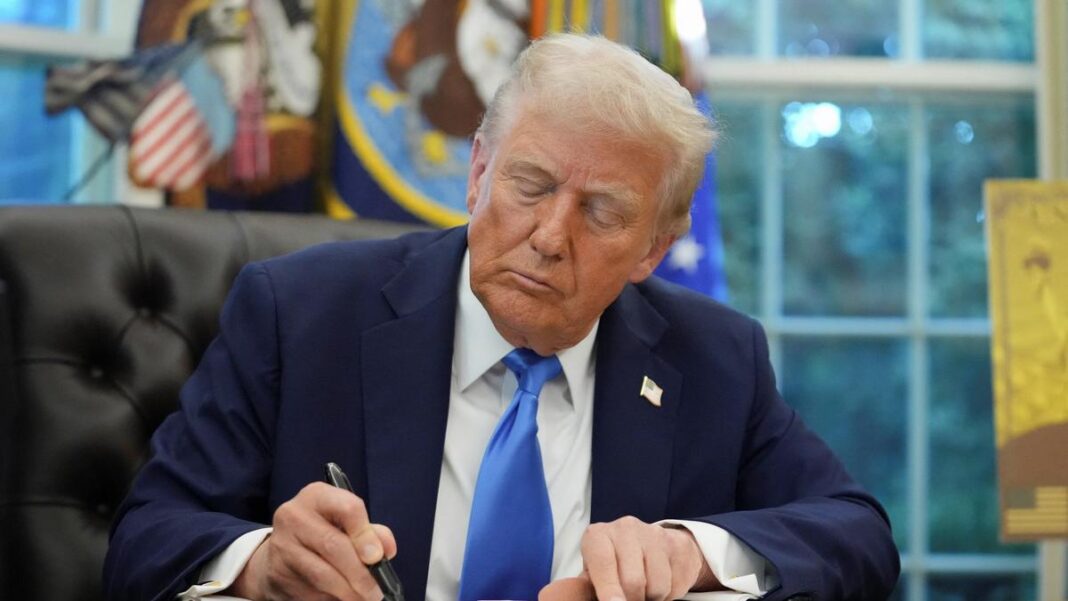Major Changes to H-1B Visa Program: Impacts on Indian Professionals
In a bold move that has sent ripples through the Indian tech community in the U.S., former President Donald Trump, on September 19, 2025, enacted a proclamation that dramatically increases the annual fee for H-1B visas to an eye-popping $100,000. This policy is part of a broader initiative by the Trump administration to tighten immigration, which has significant implications for skilled Indian workers currently employed in the United States.
Addressing Abuse of the H-1B Program
White House staff secretary Will Scharf characterized the H-1B non-immigrant visa program as one of the most “abused visa systems” within the current immigration framework. He stressed that the program was originally designed to permit highly skilled laborers from abroad to fill roles in sectors where American workers were lacking. However, this recent fee increase appears to stem from longstanding concerns regarding the potential job displacement of American workers.
As part of the justification for this fee hike, the Trump administration stated that the intention is to filter out applicants who do not meet high standards of skill and accomplishment. The administration aims to redefine the landscape of employment by allowing only “truly extraordinary people” to enter the job market under the H-1B visa.
Economic Rationale Behind the Fee Hike
The new $100,000 fee is not simply a barrier; according to Trump, it serves an important purpose. “We need workers. We need great workers,” he reiterated during the signing of the proclamation. This hefty financial requirement ensures that companies think critically about who they sponsor for H-1B applications, thereby prioritizing talent over mere necessity.
Commerce Secretary Howard Lutnick backed this rationale, citing historical data which indicated that previous employment-based Green Card programs attracted candidates from the lower quartile of earners in comparison to the average American. “We’re going to stop doing that,” Lutnick said, framing this policy as a pathway toward a more profitable and skilled workforce that could ultimately contribute to the American economy.
Impacts on Indian Technology Workers
The ramifications of this new fee structure could be felt most acutely among Indian technology professionals who have largely filled roles in top American tech companies. Under the current H-1B policy, these visas are typically valid for three years and can be extended for another three. However, the new financial burden raises questions about the viability of retaining these workers. Companies might find it economically unfeasible to sponsor H-1B applicants under such prohibitive costs, leaving many professionals in a precarious situation regarding their employment status.
Many Indian workers have been caught in a protracted wait for Green Cards, and the combination of extended waiting times with the new fee means they could soon face difficult choices—either stay in the U.S. or return home.
The Shift Towards Domestic Talent
Lutnick emphasized a philosophy that aligns with employing domestic talent over international workers: “If you’re going to train somebody, you’re going to train one of the recent graduates from one of the great universities across our land.” This shift is designed to counter what the administration perceives as a challenge, where foreign workers arrive to fill roles that could adequately be filled by Americans.
The sentiment was echoed by Trump, who insisted that big tech companies would ultimately support this initiative. He remarked, “They really love it. They really need it.” The implication is that with increased costs associated with foreign labor, companies might pivot their focus toward cultivating local talent pools instead.
The Gold Card Initiative
In conjunction with hiking H-1B fees, Trump also signed an executive order for a new visa path known as “The Gold Card.” This program allows individuals or their sponsoring corporations to expedite visa processes by paying up to $2 million to the U.S. Treasury. Under this scheme, applicants can also gain a pathway to permanent residency.
Mr. Trump framed this initiative as a significant financial boon, indicating that it could generate hundreds of billions of dollars while providing companies with access to a workforce of expertise. The strategy here aligns closely with the overarching goal of increasing government revenue while simultaneously meeting labor demands.
Confusions and Clarifications
When questioned about whether the new $100,000 fee would apply to current H-1B holders or only to new applicants, Lutnick clarified that the decision will ultimately rest with the companies. They will have to evaluate whether an existing employee or a new hire is “valuable enough” to justify the fee or whether they should instead focus on hiring American workers.
Conclusion: An Uncertain Future
While the administration insists that these measures are designed to protect American workers and enhance the overall job market, the implications for Indian professionals on H-1B visas remain uncertain. As companies weigh the costs against their needs for skilled labor, many individuals may find themselves navigating a complex immigration landscape with no clear path forward.
The future of H-1B holders hangs in the balance as an intricate dance between economic strategy and workforce sustainability unfolds.



